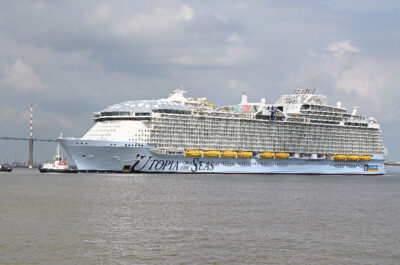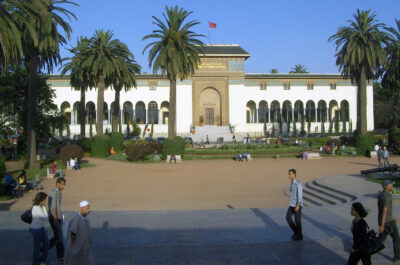Visitors from around the world are drawn to the Florida Keys to experience the island chain’s priceless natural resources. Protection of these resources began a century ago — demonstrating the region’s commitment to environmental stewardship — and an anniversary celebration is scheduled on November 15 2008 to commemorate these 100 years of conservation. The Florida Keys are paralleled by the continental United States’ only living…
Visitors from around the world are drawn to the Florida Keys to experience the island chain’s priceless natural resources. Protection of these resources began a century ago -demonstrating the region’s commitment to environmental stewardship- and an anniversary celebration is scheduled on November 15 2008 to commemorate these 100 years of conservation.
The Florida Keys are paralleled by the continental United States’ only living coral barrier reef. The extraordinary reef ecosystem, much like a tropical rainforest, supports a unique diversity of plants and animals. To protect a portion of this reef, John Pennekamp Coral Reef State Park was established off the Upper Keys in 1963 as America’s first underwater preserve. The park hosts more than a million visitors annually, offering them numerous opportunities to observe abundant wildlife through recreational and educational experiences. For more information, visit pennekamppark.com.
Pennekamp is incorporated into the Florida Keys National Marine Sanctuary, widely regarded as a national treasure, which was established in 1990 by the United States government. The sanctuary encompasses 2,800 square nautical miles of coastal and oceanic waters and submerged lands. Not only does this area surround the entire land mass of the Florida Keys, it also includes vast stretches of Florida Bay, the Gulf of Mexico and the Atlantic Ocean. The creation of the sanctuary allows for the management of the region’s special ecological, historical, recreational and aesthetic resources. Within its boundaries lie mangrove islands, historic shipwrecks filled with rare artifacts, tropical fish and other marine life.
The Lower Keys are home to the National Key Deer Refuge, established in 1957 to protect and preserve habitats for wildlife, most notably the diminutive Key deer. A subspecies of the Virginia white-tailed deer, Key deer range in size from 45 to 80 pounds fully grown. The refuge encompasses more than 8,000 acres of prime Key deer territory ranging from Bahia Honda Key to the eastern shores of Sugarloaf Key, out to the edge of the Gulf of Mexico. It also is a stopping point for thousands of migratory birds each year, and a winter home for many North American bird species including the roseate tern and peregrine falcon.
The Great White Heron National Wildlife Refuge, established in 1938, provides safe nesting and breeding areas for great white herons and other migratory birds and wildlife. White herons are North America’s largest wading bird and, according to the U.S. Fish and Wildlife Service, are found only in the Florida Keys and on the South Florida mainland. Stretching between Key West and Marathon, the refuge features more than 375 square miles of open water and islands in the Gulf of Mexico. Visitors’ primary access is by kayak, canoe or shallow-draft boat, although the refuge manages lands on Upper Sugarloaf and Lower Sugarloaf Keys that are accessible by car.
The Florida Keys’ first wildlife refuge is shortly to celebrate the 100th anniversary of its establishment. In 1908, in response to a fashion trend that was decimating migratory bird populations, then-President Theodore Roosevelt created the Key West National Wildlife Refuge to protect and preserve a breeding ground for migratory species. On November 15 2008, the refuge’s 100 years of conservation are to be commemorated by dignitaries, speakers, refuge staff and volunteers, environmental organizations and “Teddy Roosevelt” himself, portrayed by a re-enactor.
The anniversary celebration is open to the public at the Florida Keys Eco-Discovery Center, located on Key West’s Truman Waterfront beyond the end of Southard Street. Roosevelt signed a law establishing the refuge in response to the hunting of huge numbers of birds for their colorful feathers, which were used to decorate fashionable women’s hats.
“The plume trading industry was so lucrative that in 1903 an ounce of bird feathers was worth $32 -twice the price of gold,” said Anne Morkill, event organizer and manager of the Florida Keys National Wildlife Refuges Complex, which includes the Key West unit. “Adult birds were hunted, resulting in abandoned nests and destroyed eggs of snowy egrets, herons, pelicans and many others.” Today, the Key West National Wildlife Refuge provides nesting, roosting and foraging habitat for more than 250 species of migratory birds such as the roseate tern, osprey, bald eagle and magnificent frigate bird. It also protects critical nesting habitat for endangered marine turtles and host plants for the rare Miami Blue butterfly.
Lying west of Key West and accessible only by boat, the refuge is shaped like a large rectangle with boundaries stretching 10 miles wide and 25 miles long. It includes 2,019 acres of land and 206,289 acres of state waters co-managed with the State of Florida and the Florida Keys National Marine Sanctuary. The anniversary celebration is to include an environmental fair, the dedication of a commemorative plaque, lectures, a presentation by Key West Mayor Morgan McPherson proclaiming Key West National Wildlife Refuge Day, children’s activities and a chance to mingle with “Teddy.”
In addition, the Key West Post Office is to offer a special one-time commemorative postal cancellation in honor of the anniversary. The 6,400-square-foot Florida Keys Eco-Discovery Center, the site of the celebration, is the visitor center for the Florida Keys National Marine Sanctuary.





















































































































































































